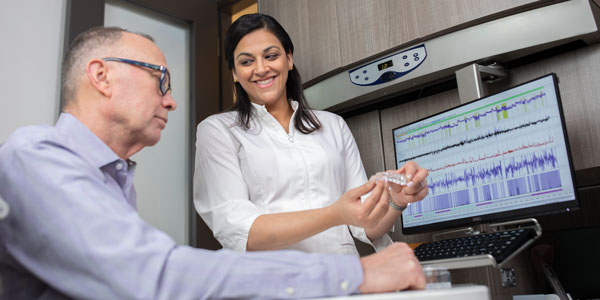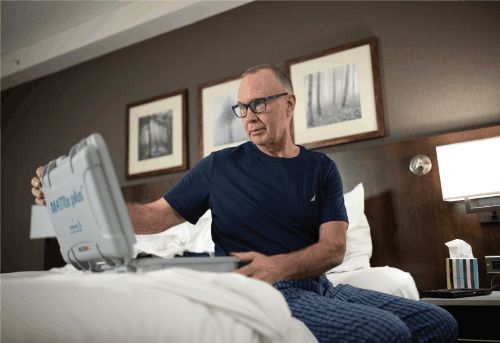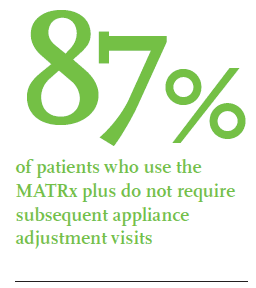by Dr. John E. Remmers

As a life-long physiologist, physician, and innovator in sleep medicine, I find the recent statistics from the Lancet deeply troubling. With close to one billion people worldwide1 suffering from mild to extreme obstructive sleep apnea (OSA), it is our job, as sleep practitioners, to step in and help these people sleep and breathe.
Over the past 20 years, we’ve seen the exponential rise of oral appliance therapy (OAT) for treating OSA. As a sleep physician, I often prescribe oral appliance therapy as the first line of treatment. Why? Most patients tend to prefer a simple oral appliance over CPAP. We’ve determined that patients are more accepting and compliant with treatment when their inputs and preferences are considered while prescribing treatment.
 Many dentists agree that offering dental sleep medicine can be immensely beneficial to a practice. Treating sleep disordered breathing illness improves the patient’s connection with the practice, provides incremental practice revenue, and is often a highly profitable treatment. Unfortunately, I believe that as more dentists begin to implement sleep in their practice, they’re learning outdated techniques and workflows and not providing the best quality healthcare or patient experience. Just as I would only send my patients to respiratory therapists and CPAP providers using the most current products, training and titration technology, I will only send my patients to dentists who are well trained and are using the most current appliances and titration technology.
Many dentists agree that offering dental sleep medicine can be immensely beneficial to a practice. Treating sleep disordered breathing illness improves the patient’s connection with the practice, provides incremental practice revenue, and is often a highly profitable treatment. Unfortunately, I believe that as more dentists begin to implement sleep in their practice, they’re learning outdated techniques and workflows and not providing the best quality healthcare or patient experience. Just as I would only send my patients to respiratory therapists and CPAP providers using the most current products, training and titration technology, I will only send my patients to dentists who are well trained and are using the most current appliances and titration technology.
 While sleep appliances are often preferred by my patients, they aren’t always as efficacious as PAP therapy. In approximately 38% of cases2, OAT does not treat the illness to an acceptable standard. Further, determining where to set the appliance’s therapeutic protrusive position is a key unknown parameter. These two unknowns can make it difficult for a sleep physician to confidently send a patient to a dentist for treatment and as a result, many of my colleagues continue to rely on CPAP as a preferred treatment.
While sleep appliances are often preferred by my patients, they aren’t always as efficacious as PAP therapy. In approximately 38% of cases2, OAT does not treat the illness to an acceptable standard. Further, determining where to set the appliance’s therapeutic protrusive position is a key unknown parameter. These two unknowns can make it difficult for a sleep physician to confidently send a patient to a dentist for treatment and as a result, many of my colleagues continue to rely on CPAP as a preferred treatment.
New technology rigorously tested and approved by the FDA has been developed to determine:
- OSA patient response to OAT treatment; and,
- Therapeutic protrusive position
This technology is available with the MATRx plus™, a medical device, now installed in over 350 dental clinics in the USA. By using MATRx plus, dentists and their teams can eliminate guesswork and provide a fast and effective way to treat my patients. In comparing the MATRx plus workflow to the traditional titration process, 87% of patients who use the MATRx plus do not require subsequent appliance adjustment visits3. This saves time for clinicians and patients while improving therapeutic predictability. These dentists, who are using the MATRx plus, are true dental sleep medicine innovators. They are confident in the treatment outcome; they are eliminating OAT failures, prescribing optimally titrated appliances, and delivering the highest quality patient satisfaction.
Sadly, there seems to be resistance to integrating this clinically proven technology into dental clinic workflows. I’ve attended numerous conferences over the years, and many industry leaders continue to teach outdated sleep techniques that aren’t established in clinical research.
 I fear the leaders in the dental sleep community are doing a disservice to the dentists interested in starting a sleep practice by not teaching progressive and innovative technology. Treating sleep doesn’t have to be complicated, it can be quite simple when you use the right technology. The MATRx plus is that technology; it is designed to make all dentists successful in sleep. Evidence supports this innovative workflow. Why does the field adhere to outmoded processes with little supportive data?
I fear the leaders in the dental sleep community are doing a disservice to the dentists interested in starting a sleep practice by not teaching progressive and innovative technology. Treating sleep doesn’t have to be complicated, it can be quite simple when you use the right technology. The MATRx plus is that technology; it is designed to make all dentists successful in sleep. Evidence supports this innovative workflow. Why does the field adhere to outmoded processes with little supportive data?
My passion and life’s work have been investigating and developing technologies for diagnosing and treating sleep apnea, and I am dismayed by the industry’s slow acceptance of this clinically proven technology. Let’s stop subjecting our patients to guesswork, uncertainty, and out-of-date clinical practice. I believe the MATRx plus is the only way to confidently prescribe OAT to patients, therefore, I refer patients exclusively to practitioners who use the MATRx plus. As this innovation reaches the tipping point, I’m certain the future will see that many sleep physicians will do the same.
